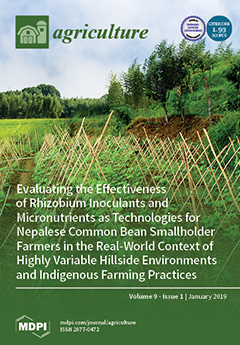The preparation of low-cost carbonaceous adsorbents for nitrogen recovery is of interest from agricultural and waste management perspectives. In this study, the gaseous ammonia (NH
3) and aqueous ammonium (NH
4+) sorption capacities have been measured for different types of
[...] Read more.
The preparation of low-cost carbonaceous adsorbents for nitrogen recovery is of interest from agricultural and waste management perspectives. In this study, the gaseous ammonia (NH
3) and aqueous ammonium (NH
4+) sorption capacities have been measured for different types of carbonaceous chars produced under different conditions. The study includes a comparison of an oak-based hydrochar produced from hydrothermal carbonisation (HTC) at 250 °C with two biochars produced from slow pyrolysis at 450 °C and 650 °C, respectively. The chars were also chemically modified with H
2SO
4, H
3PO
4, H
2O
2, and KOH to investigate the potential for sorption enhancement. The highest sorption capacities for NH
3 were observed for the hydrochars with typical uptake capacities ranging from 18–28 mg g
−1 NH
3. Sorption capacity for oak biochars is significantly lower and ranges from 4–8 mg g
−1 for biochars produced at 450 °C and 650 °C, respectively. Hydrochar showed a substantially higher sorption capacity for NH
3 despite its lower surface area. The CaCl
2 extractable NH
4+ following ammonia adsorption is incomplete. Typically, only 30–40% of the N is released upon washing with CaCl
2 in form of NH
4+. Post chemical modification of the chars resulted in only limited enhancement of char NH
3 and NH
4+ sorption. H
3PO
4 treatment showed the greatest potential for increasing NH
3/NH
4+ sorption in biochars, while KOH and H
2O
2 treatment increased NH
3 sorption in the hydrochar. As only marginal increases to char surface area were observed following char treatment, these findings suggest that char surface functionality is more influential than surface area in terms of char NH
3/NH
4+ sorption.
Full article





